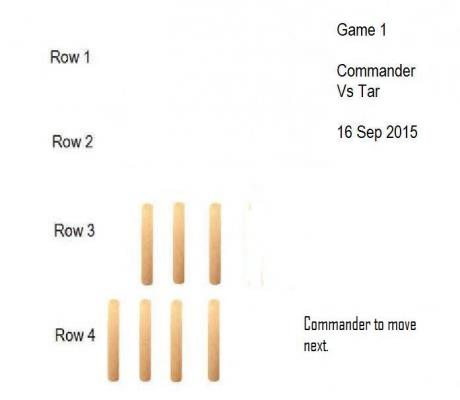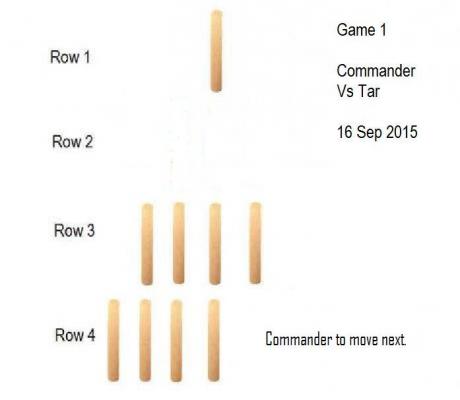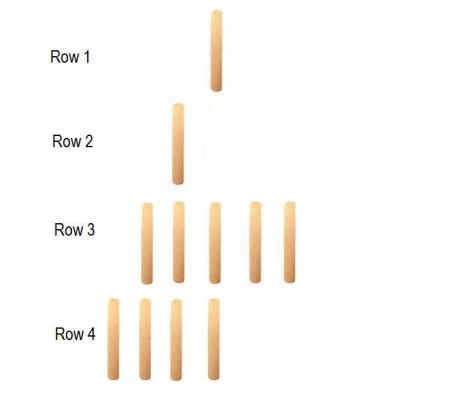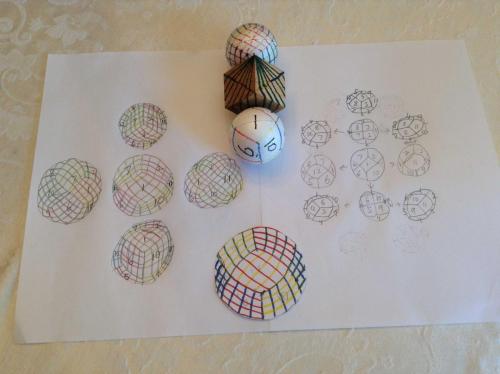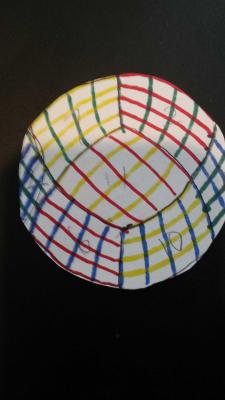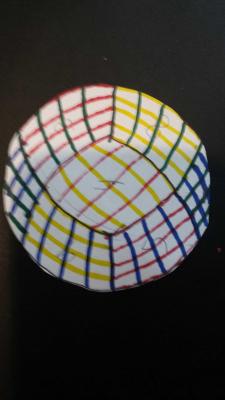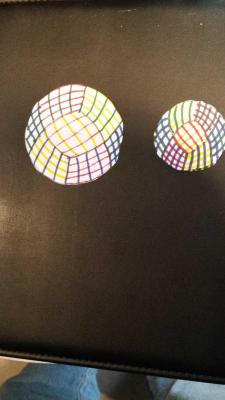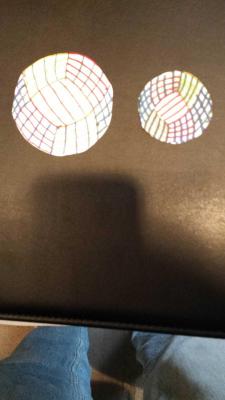-
Posts
4360 -
Joined
-
Last visited
Content Type
Profiles
Forums
Events
Everything posted by tar
-
-
Graeme M, Well, a few comments. One, how does a "state" have access to something? If the state is the new you, then the state is the you, and being a unique state, in a particular place and time, is a condition of existence. If you are conscious of that condition, if you occupy that particular place and time, if you are the new neural state that exists at that particular place and time, then "you" and the "state" are one in the same. I am not sure which aspect, or what aspect of duality you have changed your mind about, but let's use that as a clone test. If your clone was made prior your changing your mind, what does your clone feel about duality, now? Does it have "your" thoughts, or does it have thoughts of its own? If it has certain brain states, they are identical to yours only for a moment, once the new state is arrived at, in the next moment, its brain state, and your brain state are no longer identical. You have your state, it has its state. You are you, it is it. Or so it seems to me. Regards, TAR
-
-
Graeme M, And where is the natural continuity? How do "you" get from your current body/brain/heart group, into the body/brain/heart group of your clone? Regards, TAR
-
Commander, Ok, let me start off the anti-commander contingent. Here is our first move. ( It is the entire world against you commander) if anybody sees a forced victory after commander's move, please take it. If commander's next move is a forced loss for the rest of the world contingent, then it will have been just TAR's loss, as I would then have made a bad first move. here is a move
-
Thread, The cube in this photo is actually upside down, as the number 4 diamond is "up" and I meant to put the number one diamond up, but the two reasons for the photo are still there. One is to show three two dimensional representations of the 15 degree segmented figure. As you can see a three point in the center of a 2D circle yields three full segments and six half segments. A fourpoint in the center yields 4 full segments and 4 half segments, and a segment in the center yields 5 full segments and 2 half segments. The representation with the number one segment in the center is rotated slightly to a four-point or a three-point to show the orientation of the various segments to each other. The other purpose of the picture is to show the green 15 degree grid lines on the cube as if they were extended to the three points that exist on the axis of the green hexagonal "wheel". It is an interesting attribute of the 15 degree line layout, that the lines are actually all segments of great circles that intersect at the axis point, top and bottom. The yellow grid line great circles intersect at the 2,3,11 and the 5,6,12 three-points. The great circles of which the red grid lines are segments intersect at the 7,8,12 and 9,10,11 three-points. Those of the blue intersect at the 1,2,7 and 4,5,9 three-points, and those of the green, as extended on the cube intersect at the 3,4,8 and the 1,6,10 three points. The interesting thing, is that even though the grid lines are segments of great circles, which would seem to demand that the lines be "closer" to each other, as you near the three-points and similarly the farthest away from each other at the midpoint, between the two three points, it appears on the cube, that the green grid lines, that are within the diamonds of the green hexagonal wheel, are evenly spaced in reference to each other. Regards, TAR
-
Overtone, "There are a whole lot of people who have identified the current Republican Party and its rightwing authoritarian corporate backing as a serious problem, without identifying with any "other contingent" in particular." Yet there is an authoritarian power structure in the U.S. that is not monolithic and whether "businesses" are a problem, in and of themselves is cetainly a topic that has many facets to it. That businesses would back Republican candidates rather than Democratic candidates has more to do with the purse strings and the unworkability of certain policies that mandate certain expenses be paid by businesses that the businesses do not find consistent with a black bottom line, that are promoted by liberals that are not promoted by conservatives, hence the desire to back a conservative rather than a liberal. It is difficult to run a business, if there is no "boss" and it is difficult to be a boss, without being authoritarian. Somebody in the country gets the power and control to say how money is spent and who gets taxed inorder to have the money to spend. Elections are held to send representatives who will decide upon things like the budget. Liberals would like everybody to be taken care of by the government. Conservatives would like everybody to be taken care of, but would like to see it done more directly by indivuals and the organisations they join. Safety nets are one thing. Entitlements are something different. It is not workable to have everybody entitled to shelter and transportation and food and education and schooling and medical care. Somebody has to add value enough to pay for those things. Someone has to work, take risks and add value in some way or another. Was listening to a fast food manager talk about the suggested upping of the minimum wage to 15 dollars per hour. If that were to happen, he said, then they could not afford to keep the employees that they currently have, and would have to look to ways to automate and reduce the number of people it took to serve the customers. Just "wanting" everybody to earn a living wage, does not make it happen. Perhaps what I am saying, in terms of needing everyone, is that we need both the dreamer and the realist. We need the hope, and the striving to do better for everyone, but we also need the capable, trustworthy people, that actually get the job done, on a day to day basis. That provide the "means of production" and manage the projects and keep them on budget. It is good to dream, but it is important to actually do the work, make the plans and make the thing happen. It is not done by unfunded mandate. It is done when people do it of their own accord. For their own enrichment and security, and for the enrichment and security of the teams they associate with, and their neighbors. To the thread point, the problem with the U.S. is not that there are Republicans, the problem is that Democrats don't trust them to be using good judgement and don't trust them to be doing the right thing. And vice-a-versa. Regards, TAR
-
Overtone, Not enough liberals, according to the Democrats and not enough conservatives, according to the Republicans. That is the problem. Liberals want to throw conservatives out of the country and conservatives want to throw liberals out of the country. Fact is, I think, that most of us reside somewhere inbetween and as soon as we have a thought or make an action that corresponds to a liberal or conservative talking point, or stereotype, there is this instant division and we become the "problem" to the people who identify with the other contingent. In a unified country, one seeks to hold a viewpoint that everybody is important and deserves respect, even if they are living in a manner not like the way the other would do it. There is an interesting workshop coming up at the end of the month on Oct. 1st, hosted by Fairleigh Dickinson and their Institute for Sustainable Enterprise SEMINAR OVERVIEW: Findings from team research, and key actions for team improvement How to excel as a team member and traps to avoid Challenges and promise of building diverse teams Homogenous teams often think they deliver superior results... and don't Heterogenous teams often think they don't deliver superior results... but do How diverse teams are chartered can make all the difference in their performance There are reasons why heterogenous teams provide more creative solutions and reasons why homogenous teams communicate better. It is not automatically bad to work with people of your age, race, religious background, schooling, intelligence and viewpoint. It is not a liberal thought to work with heterogenous teams and a conservative thought to work with homgenous teams for instance. There are, within the conception, things that work better in one type of team and things that work better in the other. And it matters whether you are talking about race, religion, age, sex, wealth, education, political affilliation, experience, talent, or tenure, when you talk about heterogenous teams or homogenous teams. You say the inclusion I offered as a standard of a strong, unified U.S. sounds like I am saying there are not enough liberals. It could also be that I am saying there is not enough Christian Charity, as I remember singing in Sunday School " Be they yellow, black or white, all are precious in his sight, Jesus loves the little children of the world." What I am saying though, is we absolutely cannot do it without the rich or without the poor, or without the liberal cities or without the conservative bible belt, or without the young and the old, the dark and the light skinned, the male and the female. We don't need a homogeneous liberal, young, intelligentsia to be a great nation. We need everybody to see the strength in each other. Much of the power and authority that the U.S. has wielded since the Civil war has been to foster freedom and economic development, and the rule of law thoughout the world. It might even be argued that the U.S. helped in large part to set the standards of proper National behavior that the world goes by. Even the standards, that we ourselves from time to time do not live up to. Regards, TAR
-
Thread, Well, assuming that we are in agreement that the U.S. used to be the greatest country in the world, and is no longer, and we, for the most part are still the same people, or are the children of the same people, or are the grandchilden, or great grandchildren, or great great grandchildren of the people who made this country the greatest country in the world, I would say that the biggest problem in America is that we no longer trust each other to be the reasons that the U.S. is great. We have crossed out men for being chauvanist, whites for being racist, police for being cruel, business people for being greedy, sports fanatics for being pointless, gays for being immoral, children for being spoiled and self-centered, hunters for being inhumane, drug addicts for being theives and killers, gun owners for killing children, valley girls for being mindless, religious people for believing in angels, women for having no balls, smart people for manipulating stupid people and stupid people for being manipulated by smart people. We do not trust anybody to be as well rounded, morally sound, and as good an American as we ourselves are. We perhaps have forgotten that we are a great country when we trust that everybody else is trying to make the place great. We all need to do our parts, and help others do theirs. When we pick each other up and have each other's back, whether the fallen or the picker upper is American Indian, Chinese, European, African, Middle Eastern, Indian, Russian or of whatever background, when we expect the best from young and old, rich and poor, talented and challenged, regardless of religion, sex, sexual orientation, or political affiliation, then we get the best...and the country is great. Expect the worst and you are liable to get what you ask for. So, I think the biggest problem we have is ourselves. We have somewhere lost the ability to police ourselves. It is not, for instance anybody's job to throw any individual or group, OUT of the club, (USA). It is everybody's job to make sure they themselves are a contributing member, and to pledge their honor and their wealth to the continued survival of the nation. Regards. TAR
-
granpa, Sorry you got neg repped. I hate that, as well. So consider my question, as to what basis you have to say something like "yellow=pleasant white". I am not saying that there is no meaning to such a statement, I am asking you what the meaning is. Have you thought the thing through and does it make sense in more than one way? I do not see what such a statement is referring to, and I am asking you to explain. Regards, TAR
-
granpa, What does this mean? "Yellow = pleasant white Red = pleasant grey Blue = pleasant black" By what reasoning or method or analogy do you come upon these equivalencies? I can follow your thinking, in terms of qualia being of two types, that of information and that of judgment of the goodness or badness of the information, but there should be a understandable principle involved with why a certain piece of information should be judged as good or bad. Red being a pleasant grey, makes no sense to me, in terms of this. What color or other piece of information for instance, would be an unpleasant grey? My thought is that if we were to give a computer some sort of reward and punishment regiment, allowing it to partake in "good" behavior and "bad" behavior, that were germane to its survival and the continuation of its pattern, we would have a sort of analogous situation to living, thinking things, that we would normally suspect of "having" qualia. So if you gave a machine the ability to sense and remember, you would have the formation of an outside pattern on the inside of the machine, or in a real sense, "information", which is the first sense of qualia that you propose. Secondly, if you were to give the machine the ability to move about the environment and thusly vary the input, or the nature of the world it was being informed of, you would have another component of a living thinking thing. Then you might add some other way, other than movement, that the machine could affect the environment it was in, some other motor skill of grasping and holding and manipulating the environment. But then the most important "quality" would have to be added. The machine would have to die if it did the things that caused it to die and survive if it did the things that caused it to survive. These would be the "good" things, and the "bad" things. The pleasurable "good" things would need to have a "reward" associated with it, and the unpleasant "bad" things, would have to have a punishment associated with it. Similar to us enjoying a meal, rather than being hungry. Regards, TAR
-
One of the issues with my method, in regards to replacing the drug of choice with the 100 things that make you feel good, was brought up by the psychologist I was speaking to, last week about this nicotine tapering idea, was that most of these things do not provide the "rush" of dopamine that a hit of the drug provides. I am not sure how to counter that reality. I suppose that is where a person just has to work on the really important projects and relationships that will provide "rushes" of dopamine when success is reached. I suppose there is, somewhere in there, an analogy to orgasm. You have to sort of build up to the rush and then have the rush, but there is no such thing as staying in that moment. The answer, by itself, makes no sense, without the question. I can not say that taking a drag on a cigarette will not provide you with a rush of dopamine. It actually will. But there are other victories, and completions, and sensual undertakings that will also provide you with a rush of dopamine. Not as simply and fast as taking the drag on a cigarette. But the other 100 plus things that provide the same dopamine, are real and make sense, and are not a "cheating" way of flooding your brain with dopamine. The "good" ways to get dopamine, are actually good activities, that have good side effects that often can be shared with others. The drug addict is doing sort of a private, fake, general, pleasuring, that is very temporary and nonsustainable. You have to go out and obtain some more drug to have the feeling again. This is expensive and creates a dependency and often some "bad" choices, as far as life sustaining priorities go. Gamblers have the same "problem". They want the rush of the win. They will lose $10,000 to get the rush of winning $1500. Such activity is not sustainable. So I don't know how to counter the draw of the rush. It is not rational. The logic of the situation is not the primary concern for a rush seeker. And I smoked for 47 years, my wife still smokes, and my sister still smokes. What I have to say is not going to replace the feeling they get when they take a drag. The only thing I am asking is "is it worth it?". Might there not be some ways to get close to the same feelings, that are not as expensive, destructive and dependence ridden as taking a hit? Regards, TAR
-
oldsinner111, I was worried too, about the effects on my personality that quitting smoking would have. I had a number of excuses. One was my ability to handle stress, as it was always a habit to go out and have a cigarette, when things got complicated. Another was my worrying about what would substitute as a reward, and punctuation for life, the commas and the periods, and the exclamation marks, that smoking a cigarette, provided. Another was smells, as smells would jog memories and reduce my concentration on the task at hand, and smoking dulled that sense and lowered the incidence of random memories. However, as I was without nicotine for longer and longer periods of time, and as I concentrated on the other, free and easy ways of having dopamine released in my brain, I found it easier and easier to do without nicotine, to live without nicotine. The two important things I have to tell you, is one, that you absolutely do not have to give up dopamine, when you give up nicotine, and its the dopamine that you are really craving, and that, you can get, by just cuddling with a loved one or by doing any of the other 99 things on the list. And two, just follow Phi's advice and make nicotine "not an option". It is really not as required for your mental wellbeing as you are convinced it is. Just put the thing down and let it burn in the ashtray and look around and see how many other enjoyable things there are in this world. One of the "stressful" things in life, as a smoker, was worrying about not being able to smoke. How long was the meeting...how long was the flight...would you have time and place to smoke before getting a car...how are you going to light your cigarette if they took your lighter...when is this pack going to run out...how am I going to smoke while visiting a non-smoking house or building or while in a non-smoking vehical...etc. If you don't smoke, those stresses don't even come up. You are already in a good place, you don't have to plan and maneuver to feel good. You are already in a position to get dopamine. It is, in my estimation a problem if there is only one thing that will make you happy. I think they call that obsession, and it is generally considered a problem to be obsessed. Sure you can have some main things that make you happy, but to have only one, is probably not good. Especially if the "happiness" that a cigarette provides you, is chemically very similar, if not identical to the happiness that holding a baby provides. Regardless of your excuses, try not smoking, just for one hour, one morning when you wake up, and have not smoked for 8 hours, and your nicotine levels are low. You managed to have a nice restful sleep and enjoyable dreams while not smoking. See if you can enjoy yourself for one waking hour, without the help of nicotine. I bet you not only won't die, or fly into a rage, but that you will learn a little something about yourself, and your rather unrequired dependance on nicotine. Then smoke, and enjoy it, but know you can go a waking hour, without it. Then another time, when you get up, go two waking hours without it...or as long as you want. Regards, TAR
-
Thread, Still clean. Was talking to a friend who is an Army Psychologist about my stopping, and my "way" of learning to live without nicotine. We had a nice conversation and that night, before I went to bed I wrote a list of 100 things that make me feel good, and showed it to him the next day. He liked some of my thinking, and found much was along the lines of what they attempt to do with people who are hooked on drugs or are destructively using alchohol, in terms of "replacement" therapy. My own thinking is that a person likes to be in control of themself and their own situation. To that, being able to provide yourself with pleasure and happiness, and the dopamine, and "feel good", "feel right", "feel victorious", chemicals, without destructive side effects, is the main principle behind my learning how to live without nicotine. Finding the 100 things that make you feel good, that don't cost much, are readily available, and don't cause much damage to yourself or others, that in fact might make others happy as well, is a fine list to think about, a fine "feel good" pursuit, in its own right. To that, here is a rewrite of my list. Its a mixture of examples, and categories. There are, I am sure many, many more examples, in each category and probably some major categories I am forgetting, but I offer this as a starter list. Ways to get dopamine, without nicotine. They might be ways to feel good, instead of taking any destructive chemical and applicable to anybody's attempt to be free of a destructive relationship with a substance. It just so happens that many or most of the ways to feel good, are also good things that foster life and love and happiness and survival and fun and the ejoyment of those around you, as well. 100 things that make you feel good. Senses. Sight: Things that look good. Pretty things, beautiful things, colorful, nice shapes, nice proportions. Sky, sea, animals, trees, plants, flowers, birds, minerals, nicely prepared dishes, artwork, ceramics, dresses, paintings, statues. Sound: Things that sound good, in tune music, bells, chimes, voices, singing, humming, laughter, well tuned engine, expected knock on the door, friend driving up/coming up the walk, dog’s hello bark, clapping, cheering. Smell: Perfume, the scent of the opposite sex, bacon cooking, garlic cooking, cakes baking, flowers, ozone, the smell after a rain, autumn, fresh air, pine. Taste: Sweet, savory, lemon, peanut butter cups, juicy hamburger, salt, fat, gravy, fresh fruit, cherry tomatoes, fresh corn. Touch: Hugs, caresses, tickles, soft fur, silk, interesting surfaces, smooth, slippery, interesting shapes. Laughing, dancing, playing, joking, going out to dinner, watching a show/movie, riding a bike/skateboard/trike/roller-blades. Question/answer. Hunger/food Thirst/water Itch/scratch Cold/shelter(clothes) Heat/shade, cave, water Overcoming aThreat/ fight or flight Problem/Solution Plan/reaching goal. Making: Completing Finding Winning Solving Joining Holding Having Escaping Learning Sharing Overcoming Sorting Straightening Washing Exploring Being safe Being warm Being rich Being wanted Being loved Being respected Being needed Being secure Being full Being right Being capable/big/strong/smart Being trustworthy Being free/independent Regards, TAR hitting a target, giving a gift, getting a gift, solving a problem, helping a friend, helping a stranger, having something work, escaping danger, anticipation of a gift, remembering a success or good time, launching something, starting fresh, imagining... being in control, knowing the answer fixing
-
Thread, Back to the 12 section of the sphere, taradian grid concept, using the spherical rhombic dodecahedron layout, with each diamond cut into quarters, and then each quarter cut in quarters to yield 16 numbered sections per diamond, associatable to, or arrived at, by making 15 degree lines on the six segment "wheels" of the red hexagon plane, the yellow hexagonal plane, the blue hexagonal plane and the green hexagonal plane. Here is the scheme, shown in 2D. The large coin is drawn with color markers that bled through to the other side, but that retained the scheme exactly. All sections appear in their entirety, exactly as they would if you looked at a sphere thusly divided, except for sections 11 an 12, where you see half of both on one side, and the other half of both on the other. Regards, TAR (Design copyright TAResolutions 2015)
-
MigL, That has been my point, all along. david234 did not just give me the concept. It is the other sense of now that we cannot interact with, that will absolutely effect us in a moment, that we can "know" but cannot touch or see, that is absolutely real, as in not being imaginary. Like the family in Nepal, that has never been in the news, and you and I have never seen a picture of. They are doing something right now, in the cosmic sense, that we cannot interact with, we can not see it, nor affect it. We are not there. By the time we hear about it, its already done. But it absolutely happened and they are doing something, right now, in the cosmic sense, that may effect us, and become part of our here and now sense of now, later. Regards, TAR "interact with" is a relative term. We can have a penpal in Nepal. We can have a pen pal on Proxima Centauri. It is possible to have a pen pal with somebody stationed 150 lys from here, but you would have to "do it" as a family or an organization and do it with a long lived entity at the other end. But inorder to have a penpal, you have to assume they exist now, in the cosmic sense, even though they are not in the room with you, or on the phone with you, or otherwise within a moment of you. The other day, I heard they found a prayer book from a serviceman that died in the Pacific and they gave it to his wife. It was a complete surprise to her. My daughters received money from my Mom for several years after she died (with the help of my sister) on their birthdays, in birthday cards, signed by my mother's ailing hand. The whole transaction was absolutely real, actually did happen. "interact with" is a relative term
-
MigL, Ok, maybe not quite done. Read david345's linked thread, and noticed that my consideration is commonly called cosmic time, and refers to the observation of a fundamental observer. While the "universal now" that is known not to exist, is an extension of the local now and similtaneity, that is known to not be achievable, as that different observers cannot agree on such a now. So I would like to mention that the things I have said about a universal now are consistent with the concept of a cosmic time that is currently existent where all points in space are right now of equal density, having already experienced inflation, allowed the transmittal of photons, and evolved as locations of matter and energy, for 13.8 (or 13.9) billion years. As such, my statements about there being two senses of now, are far from nonsense, but instead are already concieved and explored notions of reality already built into the equations of space time. With this understanding, I think it entirely proper to consider the wavelengths of light, emitted by a distant star, ALL the wavelengths, from the cosmic moment they were emitted, as existing, for real in the cosmic moment, in the space between here and there, and cooincidently in the space passed Earth, on their way to some observer in the opposite direction as the star is from Earth. The exact nature of this foliation, since it contains ALL of the current cosmic universe, is difficult to picture. I would suggest though that it is not a slice of a static pie. The rest of the pie has not happened yet. It is at best the fresh surface of a cosmic pie, even if that surface be 4 dimensional. The rest of the pie has not yet, in the cosmic time sense, been baked. As to the binary pulsar. It may well provide evidence that gravity effects electromagnetic fields, or that gravity waves transmit energy away from the system, but the binary pulsar was not the pulsar I was considering using as a standard with which to judge the equal passage of time from both the perspective of the satelitte and from the perspective of the reciever, who both, regardless of their depth in a gravitational field, would have to see the same "cosmic" ticks, as they arrived in the Earth's area. In fact the binary pulsar may even be a better candidate for syncing up the receiver and the satellite, as there is a period dictated by the spin of the pulsar, and a period dicated by the dance of the pulsar around its neutron star partner. This "timing" is cosmic in nature, as it will be witnessed in the identical proportions and count from either the reciever or the satelitte. Whether this proves that time dilates or that time does not dilate is inconsequencial. In either case, both satelitte and reciever can go by the same consistent clock. Any determinations made, using this clock will be consistent with the determinations made on the next tick. Regards, TAR consistent if both the reciever and the satellite are aware that the two components of the binary pulsar are spiraling in toward each other and the periods are changing appropriately
-
MigL, That's OK both Strange and I are done. I offered my insight. If its incorrect and unusefull well then its incorrect and unuseful. Regards, TAR
-
Well if that is your claim, then I would suggest that claim is trivally falsiable. All you would have to do is count the pular's pulses from a lab, and send someone out to count the pulses from a moving vehical, have them come home and report the count. There is no possible reason the count could be different. Unless they went over a bump and they made two tick marks when they meant to make one. Additionally, if the pulsar we are using is 500 lys away, according to my logic, there must be 110,451,600,000 wavefronts, currently spaceborne, on their way here, from the pulsar. If the pulsar is currently emitting pulse number 10,000,000,000,000 we are currently recieving pulse number 9,889,548,400,000. Wavefront of pulse 9,889,548,400,001 is currently spaceborne, only 26,571.428 miles from Earth ( i divided 186,00 (instead of 186,000)) by 7 before and lost a place.) And the 9,999,999,999,999th pulse is also currently on its way, currently 26,571.428 miles from the pulsar. Its reality. Its geometery. Its common sense and required by logic to be the case, that the universe is so arranged. We cannot recieve a pulse from the pulsar that is 500 lys away, unless the next pulse we recieve is one it released 500 years ago...and it has to be the case that all the pulses that we will see in the next 500 years, are already spaceborne. check is in the mail
- 136 replies
-
-1
-
Strange, But does that add up? Let's say the pulsar pulses 7 times a second, 420 times a minute, 25,200 times an hour, 604,800 times a day, 220,903,200 times a year. We send up a satellite and have it orbit the Earth in such a way as its orbit alway is in view of the pulsar. We have it traveling at relativistic speeds, at very low altitude so that special relativity should slow its clock and general relativity will not speed it up too much, so that mostly special relativity effects would be expected. We send the satelitte up one day and retreive it 365 and 1/4 days later. How could it possibly count anything other than 220,903,200 pulsar pulses? That is how many pulses there were to count in that time. The pulsar clock was ticking at the frequency of 220,903,200 per year. The distance between the wave fronts of each succeeding pulse was 2,657.14285 miles. The number of pulses and the distance between the wavefronts would have happened had the satellite been launched or not, and the satellite would count exactly 220,903,200 pulses even if it thought it had only aged 7 months. So which part of time dilated? Which part of distance contracted? The satellite never left the Earth's now, it stayed within the half million miles that we can consider being within the same moment. It had to have experienced the rest of the universe in approximately the same manner as we did. That is it at least has no way to count more or less pulses of the quasar as we did at the surface. Regards, TAR
-
If length contraction is relative, then as two items pass each other, both are shortened in terms of the other. If there are moving electromagnetic fields that are present the one item is moving differently, related to the fields than the other. Since the speed of the magnetic and electric field variation or wave is always 186,000 miles per second, and is also 186,000 miles per second when considered the movement of a particle, the lead edge of the wave, and the trail edge of the wave can only be judged as a different frequency, or distance apart, depending on your motion through the wave, or in respect to the wave, as in swimming out to sea or toward shore. Same ocean, but the inward swimmer counts 14 crests in a hundred feet and the outward swimmer 21. Strange, Well wait. If you can account for certain effect using just one, then why bother with the other? And if you can account for certain effects using the other, why bother with the one? And if you can account for certain effects using a different consideration all together, why bother with either? Regards, TAR Strange, I don't know that the pulsar ticks would arrive at different frequencies, if neither the satelitte or the receiver were moving toward or away from the pulsar. Let's say the Pulsar was directly overhead, and so was the Satellite. Why would the two recieve the tick of the pulsar at different frequencies? The satellite is closer to the pulsar and will recieve the tick sooner than the receiver. Regards, TAR Only that you have the satellite's clock ticking slower, would it recieve a different frequency. It has no physical reason to receive a different frequency, only a possible reason to count it differently because it was sped up to compensate for an expected slowdown.
-
The satellite would be given a particular quasar count. That is that this particular pulsar pulse is pulse number 148,939,984,944. All recievers would figure, according to the count the satellite was on, what count they should be on, should they actually be witnessing the pulsar, (which they are not, but they have it in their programming.) There is a certain time lag between when the reciever should see the pulsar and when the satellite should see the pulsar pulse, but this is regular and known and figurable. So the reciever knows, by the beep, which count the satellite was on when it sent the beep, and it knows how long it has been since it virtually registered that pulse of the pulsar. The time between when it expected to see the pulsar pulse virtually and the time it recieved the beep from the satelitte, should be difference in distance between the light travel path Pulsar-receiver, and the light travel path Pulsar-Satellite-Receiver. This difference could be noted, even without the meter long wavelength count. All you would have to go by, is the lead edge of the signal beep, subtracting any time it takes the satelitte to sense the pulse and put out the beep. What would have to still be properly tested and figured out, is how to set the reciever's virtual pulsar pulse, as in whose here and now is it being set in accordance with, and how what corrections need to be applied as the receiver moves away from that spot. But when you come right down to it, the problem is in syncronizing the clock on the ground, with the clock in the satellite. In relativity this is a problem because the clock is moving and requires and special relativity adjustment to account for its slow tick, and a general relativity adjustment to account for its faster tick according to altitude, and then the other mundane adjustments for doppler shift and such. In the two senses of now, the doppler shift adjustments are still required, but the sychronization of the clocks is done according to how far apart they are. And time itself does not need to be considered variable. It is as constant as the tick of the pulsar. Which arrives at different parts of the universe at different times. Strange, But relativistic effects are both general and special. In one the clock slows because of motion and in the other it speeds up because of altitude. You say these are real, and I will accept that, because you have seen that if you subtract the one and add the other you get a clock ticking at a speed that when creating a frequency based on that speed, it is received by a reciever as a different frequency, based on a uneffected clock. My contention is that the frequency of the signal and its wavelength is no longer affected by the satellite, once it is sent. That is, if the radio signal's wavelength is one meter long, in reference to the receiver, then its one meter long, whether the sender is moving or not, regardless of its clock. It is the sychronization or lack thereof of the clocks, that is the problem, the wavelength can not change, once it is launched. Where and when the time dilation and length contraction is occurring is my question. Regards, TAR
-
Strange, Well, first I would have the satelitte relate the clock pulses from its crystal to pulses of a regular pulsar, so that it knew how many pulses of the pulsar and hence how many of its own clock pulses it would take for a signal to get the 50 thousand km or whatever to a known spot on the Earth and back again. I would then send out a frequency whose wavelength would be one meter long according to the figuring. Placing a beep or a blip in the transmission as each pulse of the pulsar is sensed would allow the reciever, to know the time and how many beats until the next beep. The reciever would just have to count the peaks to figure how far away it was from the satelitte. If it counted 25 million peaks in a second it would know it was 25 thousand kms from the satellite. If it counted less it would know it was closer, if it counted more, it would know it was further away. Regards, TAR but the receiver would have to sense the pulsar as well to know when the satelitte put out the beep...so let me think about this It probably took more than 15 minutes to figure out how to use the equations of relativity to set the frequency. Give me a little time to figure how one would do it, using the two senses of now, which does not yet have many equations, figured. edit where quasar should read pulsar
-
I have considered I am looking at it wrong, but I have also considered I am looking at it OK and the way I am looking at it is not inconsistent with reality. Like the Blind Men and the Elephant story, each was right, and each was talking about the same Elephant, even though one figured the elephant was rather like a wall and another is was rather like a snake, and another it was rather like a leaf... You say our models work over billions of light years distance and over billions of years. But we have no verification of this. We have no observers reporting from distant locations, as to what is going on there, now. And the reports we do get, from billions of lys away are billions of years old, telling us what the universe was like, from that position, billions of years ago. Your sense is that when we see a thing happening in the sky, that is the current thing that is happening in the sky. I absolutely aggree. That is what is happening now, as far as the Earth is concerned, it is those radio waves, those microwaves, those infrared waves, that visible light, those ultraviolet waves, those x-rays, those gamma waves, that are hitting the Earth now, causing things to grow, and bathing beauties to tan, and star observers to plot the position of the stars, and university cosmologists to plot the isotropies of the background microwave radiation. But to a scientist on a planet 45 billion lys from here, whose galaxy is also 13.8 billion years old, and has undergone 2 or 3 generations of star formation, when she looks in the direction of the Milky Way, she does not see the Earth, because this area of the universe is only 380,000 years old to her. We look like cosmic microwave background, to her. That is our position in the universe, was only 380,000 years old when the photons headed in her direction and reaching her today, left. There are two nows. That which is arriving here now. And that which is currently happening, everywhere else. It requires that electromagnetic fluctuations be "on their way" here, from an event at the same time as fluctuations from a previous event at the same location are reaching here. Two locations in space are connected by a constant history of photons. From here and now the universe is complete and satisfactorily connected. From anywhere else the universe is complete, and satisfactorily connected, but since they will order the events of the universe differently and see a different set of events as current, than do we, and since it is commonly agreed that there is only one instance of the Mars rover, even though we know it exists now on our cameras, and it exists now in reality as well, 14 minutes before our cameras report the existence we know there is still only one instance of the rover. Therefore there are two senses of now. That which exists and is 13.8 billion years old, which is everything. And that which is forming the reality on Earth, now. Regards, TAR
-
Strange, I understand that numbers and metrics and statistical analysis and all are critical to technology. When small differences add up to big differences the initial conditions have to be adjusted to compensate. The transmitters on the GPS satellites are tuned to a precise frequency to make up for the difference in time and the relative motion between two, distant, moving items. This would be required whether you figured it by relativity equations, or by 2 senses of now figuring, or you could have a self tuning frequency that tuned until a set receiver calculated it was the distance from the satellite that it actually was measured by orbital calculation, to be. The set reciever could send a signal for it to lower the frequency to a longer wavelength if a certain count of peaks resulted in too short a distance calculation, and vice-a-versa. Using any of the three methods would allow technology to work, and none would negate the workability of the other. Regards, TAR


